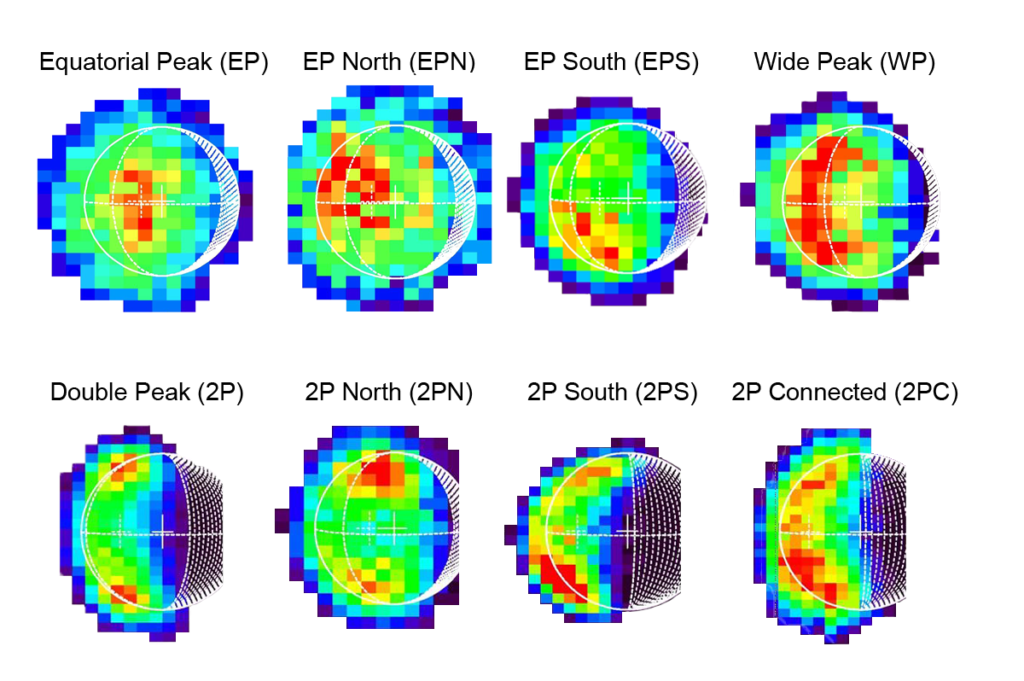Istituto di Astrofisica e Planetologia Spaziali (IAPS)
of the Istituto Nazionale di Astrofisica (INAF)
The “Fisica dei Plasmi Spaziali e Space Weather” (PSSW) group at IAPS/INAF of Rome
Description
The PSSW group at INAF/IAPS in Rome has a solid research tradition in Space Physics and Space Weather. The research activity is mainly devoted to the study of space plasma processes which take place in the solar atmosphere, the solar wind and the heliosphere, as well as in the terrestrial magnetosphere and ionosphere and in other planetary environments, also in a Space Weather perspective.
Personnel
Scientific staff14
Technical staff5
Fellows3
Associate scientists3
Main Topics
- Solar photospheric convection and solar activity variability.
- Solar wind features and dynamics, space plasma turbulence and dynamical complexity, magnetic reconnection, particle acceleration and shock waves in the heliosphere.
- Galactic Cosmic Rays (GCRs) modulation.
- Interaction between the solar wind, solar energetic particles (SEPs) and GCRs and the terrestrial or other planetary environments.
- Variability of planetary, lunar, and asteroid environments (e.g. magnetospheres, exospheres, atmospheres) due to the interaction of the Solar System bodies with the local interplanetary space (the so-called Planetary Space Weather). Physics of the terrestrial and planetary magnetospheres, upper atmospheres, radiation belts, plasma-surface interactions.
- Space weathering at airless bodies (e.g. asteroids, the Moon, Mercury).
Methodology
These studies are carried out through the analysis of observational data, models development and implementation and numeric simulations.

Some results obtained in the frame of Space Weather are:
- the development of a SEP forecasting model to provide real time warnings (10 min after the maximum of ≥ M2 soft X-ray flares) for the occurrence of SEP events (Figure 1), which represent a hazardous condition in the interplanetary space;
- development of operational Artificial Neural Network algorithms, based on interplanetary magnetic field parameters, to forecast the geomagnetic indices before geomagnetic storms;
- dynamical complexity of the Earth’s magnetospheric response to solar wind changes by investigating the scaling properties of the geomagnetic field variations/fluctuations;
- validation of the “component merging model” for the reconnection occurrence at the dayside magnetopause.
In the context of Planetary Space Weather, a series of numerical models have been developed, simulating for instance:
- the complex Hermean environment and its long and short term variability;
- the Moon’s exosphere generation and dynamics;
- the interaction of SEPs with the Venusian atmosphere;
- the generation of an exosphere around an icy satellites, as a result of the surface interaction with the hot plasma of the parent planets’ magnetosphere;
- the possible of the action of the Sun’s role in Mercury’s surface evolution.
The PSSW group is active in the laboratory in-house development of space borne and ground based instrumentation (e.g., Plasma Chamber, Energetic neutral Atoms, ENA-Lab) and observational campaigns (e.g., observations of Mercury’s Na-exosphere variability in the context of Planetary Space Weather, Figure 2).

Projects
The PSSW group is involved in the following ESA missions as Lead-Institute.
 PI-ship level for BepiColombo/SERENA (Search for Exospheric Refilling and Emitted Natural Abundances, http://www.ifsi-roma.inaf.it/serena/), which will investigate the Mercury’s complex particle environment that surrounds the planet. This international instrument suite includes four sensors. In particular ELENA has been entirely designed, developed and calibrated by IAPS (supported by the CGS company).
PI-ship level for BepiColombo/SERENA (Search for Exospheric Refilling and Emitted Natural Abundances, http://www.ifsi-roma.inaf.it/serena/), which will investigate the Mercury’s complex particle environment that surrounds the planet. This international instrument suite includes four sensors. In particular ELENA has been entirely designed, developed and calibrated by IAPS (supported by the CGS company).
 Co-PI-ship level for Solar Orbiter/SWA (Solar Wind Plasma Analyzer), which will characterize the solar wind particles between 0.28 and 1.4 AU from the Sun.
Co-PI-ship level for Solar Orbiter/SWA (Solar Wind Plasma Analyzer), which will characterize the solar wind particles between 0.28 and 1.4 AU from the Sun.
 PI-ship level (Phase A) for the THOR/PPU (Particle Processing Unit), which will control the particles instruments onboard THOR (M4 candidate mission currently in phase A) for the study of turbulence heating and acceleration in space plasmas.
PI-ship level (Phase A) for the THOR/PPU (Particle Processing Unit), which will control the particles instruments onboard THOR (M4 candidate mission currently in phase A) for the study of turbulence heating and acceleration in space plasmas.
Some other projects are:
- CSES (China Seismo-Electromagnetic Satellite) mission (funded by the Italian Space Agency) that will allow to investigate the structure and the dynamic of the topside ionosphere, the coupling mechanisms with the lower and higher plasma layers and the temporal variations of the geomagnetic field, in quiet and disturbed conditions, as well as solar-terrestrial interactions;
- ENAMISS, phase A study for ENA Monitoring from the ISS funded by Kayser Italia s.r.l (H2020 SME program);
- various proposals in the frame of Cosmic Vision M5 program (MarcoPolo 3D, ESCAPE, Alfvèn);
- ESA call for mission proposal (LUCIANUS) LUnar Cubesats for Exploration (LUCE);
- proposal to NASA for participating to a Korea Pathfinder Lunar Orbiter (KPLO) (MICA).
Ground based Observatories
The PSSW group handles two ground based observatories particularly relevant for Space Weather.
 The neutron monitor of Rome (SVIRCO Observatory, http://webusers.fis.uniroma3.it/svirco/), which records continuous measurements of the cosmic ray nucleonic component. It is part of the world-wide network of neutron monitors and provides real time data to the European Neutron Monitor Database (NMDB, http://www.nmdb.eu/) and contributes to the Space Weather system “Ground Level Enhancements alert” used by the “Space Situational Awareness Space Weather Service Network” of ESA (http://swe.ssa.esa.int/web/guest/anemos-federated).
The neutron monitor of Rome (SVIRCO Observatory, http://webusers.fis.uniroma3.it/svirco/), which records continuous measurements of the cosmic ray nucleonic component. It is part of the world-wide network of neutron monitors and provides real time data to the European Neutron Monitor Database (NMDB, http://www.nmdb.eu/) and contributes to the Space Weather system “Ground Level Enhancements alert” used by the “Space Situational Awareness Space Weather Service Network” of ESA (http://swe.ssa.esa.int/web/guest/anemos-federated).
 An HF radar, called Dome C East, located at the French-Italian Concordia base in Antarctica, which is part of SuperDARN Network (Super Dual Auroral Radar Network, http://vt.superdarn.org), that provides a continuous measurement of the ionospheric plasma motion and information on the Earth’s space environment.
An HF radar, called Dome C East, located at the French-Italian Concordia base in Antarctica, which is part of SuperDARN Network (Super Dual Auroral Radar Network, http://vt.superdarn.org), that provides a continuous measurement of the ionospheric plasma motion and information on the Earth’s space environment.
Contact person: Monica Laurenza
